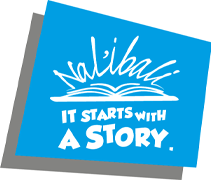Nozi Ngomane is a storyteller, writer, mother, daughter, assistant teacher and traditional healer. She is currently a Project Manager for Kwesukela Story Events and Chair of Alexandra Amakhono Project which develops the youth through the arts. This article was written with the support of Patty Akriel.
Since the beginning of human development, there has been storytelling, and music was used to accompany it. Some argue that music and song in Africa is a natural addition to storytelling.
Where I grew up, in the rural area of Mpumalanga (Kwandebele), the Ndebele tribe make musical instruments from wood and use these instruments on significant occasions. For example, when a young boy comes of age and is declared a man, the instruments are taken up when the community sings, but the songs are not just any songs, they tell the story of the journey from boyhood to becoming a man.
And drums! Drums have always played an important role in the African culture of storytelling and are used to call forth an audience for story time. Different beats are played for different age groups and genders. For the little one, assisted by the drum, stories teach pronunciation and articulation. Stories also teach us about nature's sounds and have inspired us to make our own instruments. Now, there are indigenous instruments that sound exactly like frogs, elephants, birds, rain or the wind.
Many different cultural groups lay claim to the variety of instruments we celebrate today as part of our heritage. The marimba hails from Mozambique. This instrument produces a chorus type result and is used for different story characters, rhythmically transporting audiences to an enchanting world of fun and imagination. The marimbas are often played by four people; each one producing a sound that is equalled to that of a piccolo, soprano, tenor or baritone singer and projecting distinctly individual roles whether human or animal.
The uhadi bow is an isiXhosa instrument said to produce only two notes. But, in its playing, it delivers delightfully surprising mellow and warm notes that best illustrate different animal sounds and the soft tones of a love story.
For the storyteller, it is of utmost importance to tell a story with an instrument that presents a synergy of voice and music. The storyteller uses the voice, body movement and music to create a balance of rhythm and it takes many days of training and rehearsal to find the enchanting balance between storytelling, music and song.
The most effective use of this is found in sharing stories with the blind. The enchantment seems more spirited, as blind children seem to magically transport themselves into the story world. Regardless, the African story is filled with rhythm and music, which is a story in itself.
